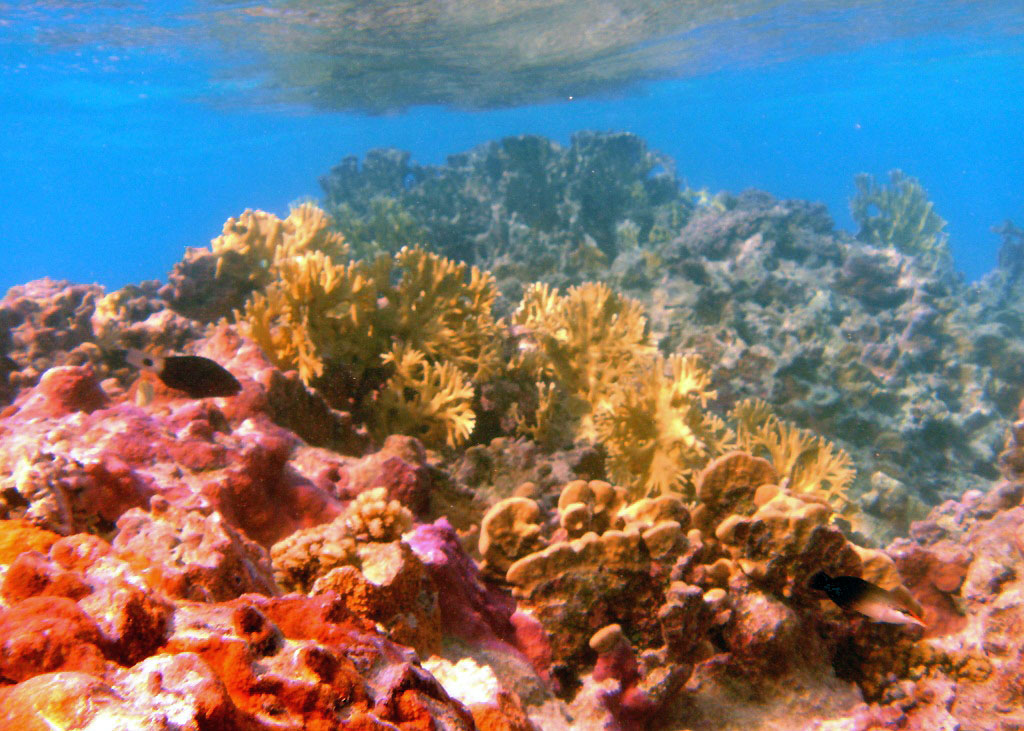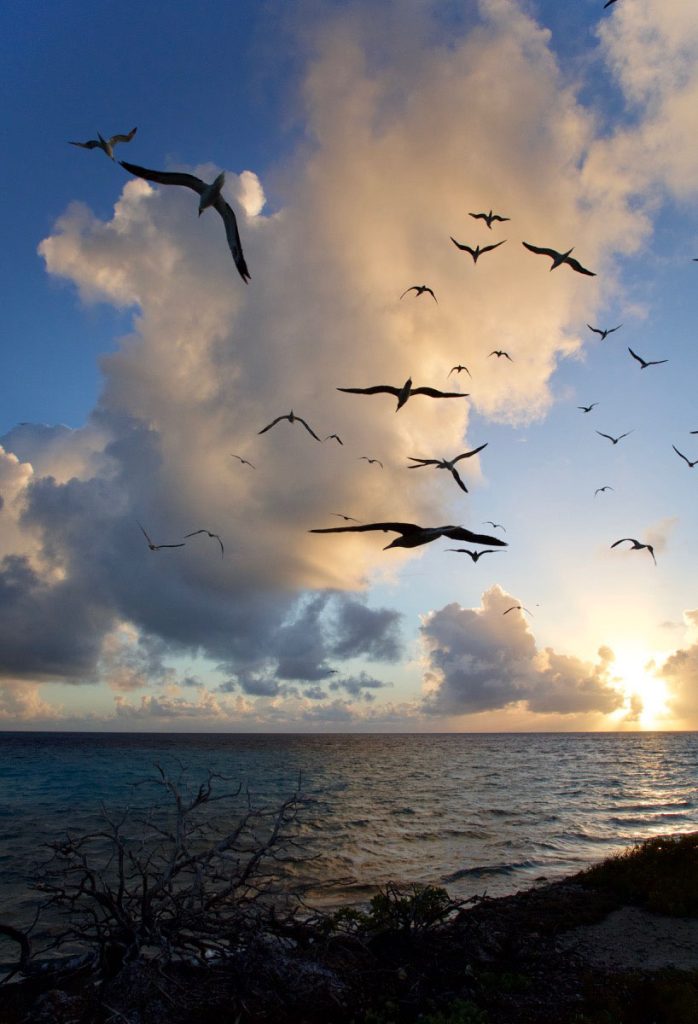Ecologists, cultural practitioners oppose U.S. military rocket launchpads for testing at Johnston Atoll
The United States military is eyeing the environmentally and culturally important Johnston Atoll, located about 820 nautical miles southwest of Kauaʻi, as a site to land test rockets.

The Department of Defense, Department of Air Force and the Space Force announced in the Federal Register on March 3 their intentions to build and operate two landing pads on Johnston Island, part of the Johnston Atoll, for testing of reusable rockets that would transport cargo between locations on Earth.
The plan is for the pads to support 10 reentry rocket landings per year over four years. This is part of Rocket Cargo Vanguard, a Space Force program run through the Air Force Research Lab to develop rapid cargo transport.
In a United States Transportation Command press release in 2020, U.S. Army Gen. Stephen R. Lyons discussed a partnership with Elon Musk’s Space Exploration Technologies Corporation (SpaceX) and Exploration Architecture Corporation (XArc) to explore the possible capabilities of rapid space transport.
In the Federal Register on March 3, the notice said the purpose of the landing pads at the Johnston Atoll, originally called Kalama, was to “safely test and demonstrate the expeditious delivery of tons of materiel through space in support of ongoing research, development, test and experimentation” under the Rocket Cargo Vanguard program.
The goal is for the Department of Defense to be able to transport military materials and equipment anywhere around the globe in just hours. The notice said: “Current military modes of transportation require days to weeks of planning and logistics to provide materiel to distant locations at the time and place of need.”
Lyons said in 2020: “This capability has the potential to be one of the greatest revolutions in transportation since the airplane.”
However, of the eight SpaceX Starship rocket launches, four have failed, leading to explosions, debris and disrupted commercial flights. The most recent failures occurred on Jan. 17 and March 6, prompting formal Federal Aviation Administration investigations.
The risk of such mishaps greatly concerns the Pacific Islands Heritage Coalition — a group of scientists, cultural practitioners, elders, fishers and community leaders opposed to the the atoll becoming a site for rockets to land.

They are concerned about contamination, debris, noise pollution, failed landings and other potential negative impacts on this globally significant marine area.
While the isolated atoll has been under U.S. military control since 1936, it also is protected as part of a National Wildlife Refuge and the Pacific Remote Islands Marine National Monument.
The Air Force is currently preparing a draft environmental assessment and anticipates a draft finding of no significant impact, which will be available for public review in early April 2025.
It also said in the notice that Johnston Island, an unincorporated territory of the United States located in a broad ocean area, was identified as the safest and most viable location to meet operational requirements.
But the military does not have a great environmental or cultural track record at the atoll. Much damage was done to Johnston Atoll in the early decades under military control, when it served as a naval refueling depot, airbase, nuclear and biological weapons testing site, secret missile base, and storage and incineration facility of chemical weapons and Agent Orange.
More than two million gallons of Agent Orange, a chemical herbicide used during the Vietnam War that caused severe health issues for millions, leaked and contaminated the atoll and lagoon over several years.
The military’s destructive actions at the atoll have included coral dredging and filling shallow areas to increase the size of Johnston and Sand islands, and the creation of two artificial islands.
According to the Environmental Protection Agency archives, the U.S. Army safely destroyed the last of over 400,000 obsolete chemical weapons in 2000 and last conducted operations on the island in 2003, when it completed the cleanup and demolition of incinerator buildings.
In 2005, the atoll was briefly placed up for auction via the U.S. General Services Administration, with a sales pitch it could be used as a “residence or vacation getaway,” with potential usage for “eco-tourism.”

In 2018, the Environmental Protection Agency issued a Resource Conservation and Recovery Act Permit to the U.S. Department of Air Force for corrective action at Johnston Atoll.
Marine ecologist Dr. Alan Friedlander, who has been based in Hawaiʻi for the past 35 years and now is Chief Scientist of National Geographic Pacific, said: “Wildlife has rebounded since the military occupied Johnston, but there’s no guarantee it will again.”
And, he added: “Launching rockets is a messy endeavor.”
Dr. Richard Pyle, senior curator at the Bernice Pauahi Bishop Museum, said: “The area is a unique natural laboratory providing insights into marine species distribution across the Pacific. Given its small size and remoteness, the precious ecosystems of this atoll are especially susceptible to disruptions that could cause permanent damage.”
The Johnston Atoll is part of the Pacific Remote Islands area that includes four other uninhabited islands or atoll complexes: Wake Island; Palmyra Atoll and Kingman Reef; Howland and Baker Islands; and Jarvis Island. These low coral islands and atolls are the peaks of ancient coral reef caps and massive underwater volcanoes up to 120 million years old.
“The Pacific Remote Islands are treasures, with thriving wildlife, abundant reefs, and resilient ecosystems,” Friedlander said. “The proposed project is at odds with this.”
Johnston Atoll is a shallow coral reef covering approximately 32,000 acres and featuring more than 300 species of fish, including the endemic Nahacky’s angelfish.

It also is home to 14 seabird species, including the largest known nesting populations of red-tailed tropicbirds.
“Healthy coral reefs will be threatened by debris or potential fuel leaks,” Friedlander said. “Bird populations will face resource competition, potentially decimating them and forcing them to find new nesting sites.”
He also said building a facility offshore offers logistical advantages and fewer environmental watchdogs, “enabling skirted regulations and impacts.”
And, Friedlander said the increase in people needed to operate the landing pads would cause indirect damage by altering the dynamic, fragile marine ecosystem.
“The collateral damage will have lasting impacts,” he said. “There isn’t enough understanding of the unique, irreplaceable nature of this area, particularly Johnston Atoll. It is both an ecological and cultural bridge.”

The atoll’s formation began at least 70 million years ago through volcanic eruptions. The area holds significant cultural and spiritual importance for Native Pacific Islanders’ migration and voyaging, with a deep history connected to Hawaiʻi, including Kamehameha IV’s 1858 claim of the island for the Kingdom of Hawaiʻi.
“Native Hawaiian and Polynesian cultural practitioners have protected the legacies of atolls, islands, and reefs for over a hundred years,” said Jonee Peters, Executive Director for Conservation Council for Hawai‘i. “Johnston serves as a bridge vital to wayfaring Polynesians and Hawaiians. The islands were stopovers, refuges for rest and resupply.”
The draft finding of no significant impact will be made publicly available on the U.S. Air Force websites for the Pacific Air Forces and the Air Force Installation and Mission Support Center.
Once published, a 30-day public review period will follow, during which people are encouraged to submit written comments for the Air Force’s consideration.
The Pacific Islands Heritage Coalition initiated a public petition urging an immediate halt to proposed commercial rocket testing at Johnston Atoll, calling for a comprehensive Environmental Impact Statement and exploration of alternative locations that do not threaten critical habitats, protected wildlife and cultural heritage.
“If we’re mapping globally, Johnston is centrally located in the Pacific, yet closer to Hawaiʻi, which is alarming,” Peters said. “I believe people should contact their Congress representatives and express their views. Public opinion is influential. When representatives and senators hear constituents’ concerns, it impacts decisions significantly.”











